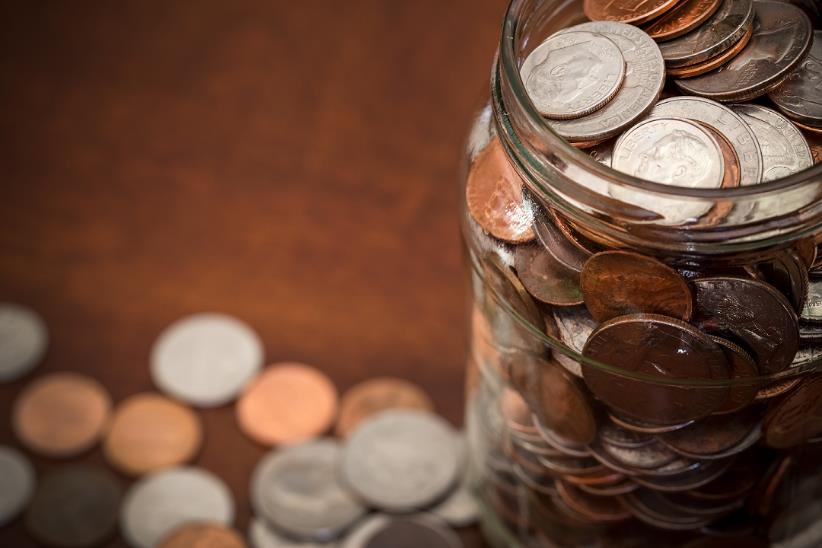Local Storage seems to be disabled in your browser.
For the best experience on our site, be sure to turn on Local Storage in your browser.
A Beginner’s Guide to Buying Your First Coin

Everyone has heard the popular saying: "you have to start somewhere," and many times, that's exactly how the process works when you begin your coin collecting journey. Maybe your uncle has always collected coins, but you never really got into it, or perhaps your friends like to share their collections with each other and you're tired of feeling left out. Whatever the case, there's really no specific path to take when you initially decide to become a coin collector. Since it can be difficult to figure out where to begin, here’s some helpful numismatic information.
1. Background knowledge.
First and foremost, do enough research to at least be aware of the different coin collecting possibilities. For example, most people are aware that collecting state quarters is a popular hobby. However, many people aren't aware that collecting American Silver Eagles has also been a popular hobby for about 30 years! So, take a look online or in the library, and begin learning about the different types of coins and the respective countries that mint them. Once you have a general understanding of the many different coins that are popularly collected, ask yourself what theme or type of coins you would like to begin your collection with. Do you want to own every year of the Lincoln Cent? Or would you like to obtain a coin from every country possible? Perhaps you have an interest in rarity, such as error coins or ancient coins! To help answer these questions, you should also start to familiarize yourself with the different ways coins can be categorized.

2. Speak the language.
So, let's imagine that Morgan Silver Dollars have caught your attention. While checking them out at GovMint.com, you might have noticed that there is a light grey box with descriptive information on each coin's page. The titles in this box are as follows: Year Issue, Country Origin, Composition Type, Denomination, Grade Type, Condition Type, Pedigree Type, Purity, Coin Weight, Mint Name, Dimensions, and Currency Type. Essentially, this is a list of attributes that describe the coin. Understanding these attributes will be very helpful when you begin collecting, so here are some brief explanations to help clarify.
- Year Issue is fairly self-explanatory; it means what year that particular coin was issued.
- Country Origin lists the country that the coin was minted for.
- Composition type describes the type of precious metal the coin is made of (which in this case is silver.)
- Denomination is the monetary value of the coin; for example, one, five, or ten.
- Grade Type represents the quality of the coin. Since the topic of grading is slightly more advanced, we will re-visit this point later on.
- Condition Type relates to grading, so it will also be discussed more later.
- Pedigree Type refers to any special properties of the coin that will be included on its label.
- Purity refers to the quality or fineness of the precious metal in the coin.
- Coin Weight is exactly what you'd expect – the coin's weight! In this case it is 26.73 grams, which you'll learn is the same for all Morgan Silver Dollars.
- The Mint Name clearly identifies the name of the facility that manufactured the coin.
- Dimensions refers to the diameter – and sometimes thickness – of the coin.
- Currency type identifies what kind of currency each piece is, in this case, it is a dollar. However, it can be many other types, such as Shillings, Francs, or Pounds.
Though there is a lot of information to learn, the coin collecting as a hobby can be very rewarding. Once you understand these basic points, understanding the different currencies of the world can be much easier.
3. Study the coin grading system.
Now that you have a better understanding of some key numismatic terms, let's return to the topic of coin grading. Since coin grading varies, this explanation will be as basic as possible, mostly to be used as a foundation for you to build upon.
First, it is important to know that there are two main third-party grading companies held in high regard: Numismatic Guaranty Corporation (NGC) and Professional Coin Grading Service (PCGS). Each service has its own – but similar – grading system.
Another major component in understanding coin grading is to know that there are both uncirculated coins (coins that haven't been used in the public) and circulated coins (coins that have). This is relevant to the aforementioned Condition Type, as Circulated and Uncirculated are two possible Condition Types. Other examples of Condition Types would be: proof, proof-like, antique, specimen, and graded. In terms of Grade Type, you must become familiar with the Sheldon grading scale, a numerical grading system within the parameters of the ‘Graded' Condition type. For example, 1 is lowest on the scale (poor), while 70 is the highest (perfect).
There are still many other phrases used to describe the coins and their perspective grades, but the terms are fairly self-explanatory. Poor means the coin is in a poor or almost completely worn state; Fine means that the coin is well worn, but its designs and words are still clear and bold. Lastly, About Uncirculated means almost perfect.
4. Know who you can trust.
Okay, so back to the Morgan Silver Dollar! We have (fictitiously) decided that these are the first coins we want to collect. "Where do I buy them?" you might ask. Well, luckily, you are already in the right place! Companies like us – GovMint.com – are trustworthy and knowledgeable, plus we have hundreds of coins to choose from, which makes us a great and safe place to buy coins. Unlike us, however, there are many sites and dealers that sell counterfeit coins. There are also many dealers that sell coins that haven't been taken care of or properly stored, therefore losing most of their numismatic value. So, feel free to spend all the time you need perusing our site, where you can be sure that all of our coins are in tip-top shape and come exactly as promised!
5. Begin your collection!
Let's say you've decided on our 1921-P Morgan Silver Dollar BU (Item # 221992, if you'd like to follow along on our site). There are pictures showing the front (obverse) and back (reverse) of the coin, along with the aforementioned ‘Highlights' section. But, let's walk through this one, just in case. From the title alone, you know that this is a Morgan Dollar made out of silver, and that it was minted in 1921. The Currency Type is – you guessed it – dollar. The "P" means that it was minted at the Philadelphia Mint. You can also determine where the coin was minted by looking for the "mintmark" – which in this case would be a tiny "P" – somewhere on the coin. The "BU" stands for "Brilliant Uncirculated" – so it's a pretty nice coin! The highlights section also tells us that it weighs 26.73 grams and measures 38.1 millimeters in diameter.
After confirming that this particular coin is the one you wish to claim, you’ve successfully reached the final step in your coin collecting process! Maybe you're even sold on the idea of starting a collection of Morgans. But if not, there are still hundreds of categories and types of coins to choose from at GovMint.com. Now, go embark on your coin collecting journey! Search through our site and find exactly what you are looking for. If you need any help, call us toll-free at 1-800-642-9160 to speak with a Coin Professional.
© 2024 Copyright GovMint.com. All Rights Reserved. GovMint.com does not sell coins and numismatics as investments, but rather as collectibles. Please review GovMint's Terms and Conditions, Terms of Use and Privacy Policy before using this website and prior to purchasing from GovMint.com.
